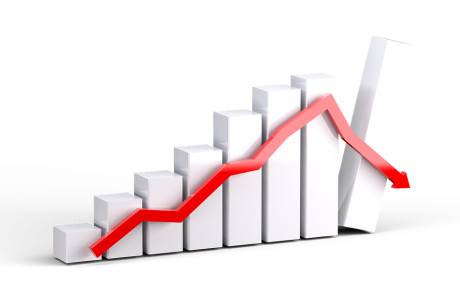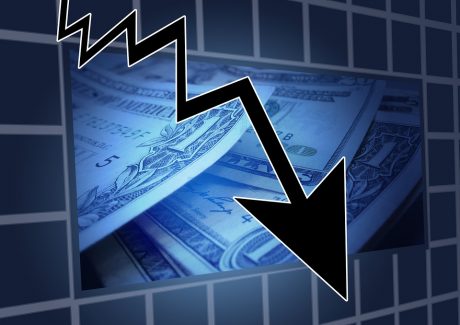 The mainstream media seems so surprised that the stock market is crashing, but the truth is that it isn’t a surprise at all. In fact, this crash is way, way overdue. If the Dow Jones industrial average fell another 10,000 points, stock prices would still be overvalued. I have been warning and warning and warning that this would happen, because stock valuations always return to their long-term averages eventually. On Monday, the Dow was down a staggering 1,175 points, which was the largest single day decline that we have ever seen by a very wide margin. In fact, it shattered the old record by nearly 400 points.
The mainstream media seems so surprised that the stock market is crashing, but the truth is that it isn’t a surprise at all. In fact, this crash is way, way overdue. If the Dow Jones industrial average fell another 10,000 points, stock prices would still be overvalued. I have been warning and warning and warning that this would happen, because stock valuations always return to their long-term averages eventually. On Monday, the Dow was down a staggering 1,175 points, which was the largest single day decline that we have ever seen by a very wide margin. In fact, it shattered the old record by nearly 400 points.
Shortly after 3 PM, all hell broke loose on Wall Street. The Dow dropped by more than 800 points in just 10 minutes. At one point on Monday, the Dow was down nearly 1,600 points, but a brief rally cut those losses roughly in half. However, the rally did not last long and stock prices collapsed hard as the market closed. At this moment, the Dow is already down more than 2,200 points from the peak of the market, and we are not too far from officially entering “correction” territory.
Once stocks start falling, it can trigger a massive rush for the exits, and that is what happened on Monday. In particular, investors started to panic once the Dow broke through the 50-day moving average…
“As soon as we broke the 50-day moving average … we saw volatility spike,” said Jeff Kilburg, CEO of KKM Financial. “It’s just been downhill from there.”
Other waves of selling were triggered once the 25,000 and 24,000 barriers on the Dow were breached. In order to protect against losing too much money, many investors have stop losses set at psychologically-important levels. The following comes from MarketWatch…
…click on the above link to read the rest of the article…








 In my recent post,
In my recent post, 

 How new years generally work… [PT]
How new years generally work… [PT] It is that time of year again where we try to forecast what the oil price will do over the coming 12 months. Last year I forecast $60 / bbl for Brent year ending 2017 and with Brent trading on $66.50 as I write I can conclude that I got lucky this year. My friend wagered on $78 and our bet this year was too close to call. My forecasting effort is based on trying to understand the supply, demand, storage, price dynamic and since this seemed to work pretty well this year I will repeat the exercise with some slight modifications.
It is that time of year again where we try to forecast what the oil price will do over the coming 12 months. Last year I forecast $60 / bbl for Brent year ending 2017 and with Brent trading on $66.50 as I write I can conclude that I got lucky this year. My friend wagered on $78 and our bet this year was too close to call. My forecasting effort is based on trying to understand the supply, demand, storage, price dynamic and since this seemed to work pretty well this year I will repeat the exercise with some slight modifications.
